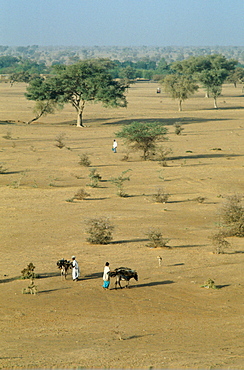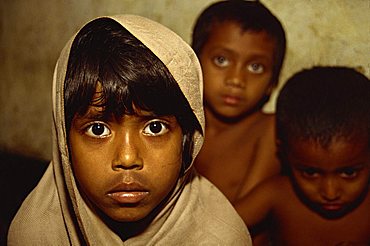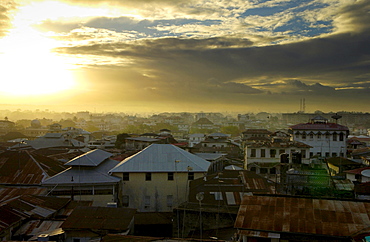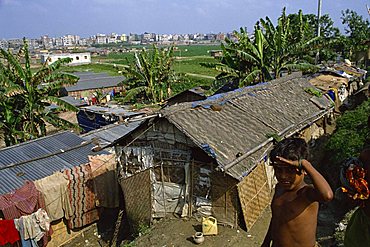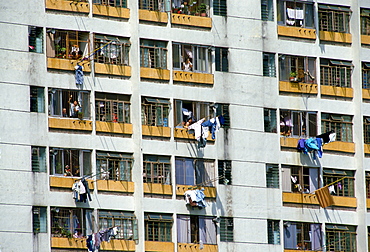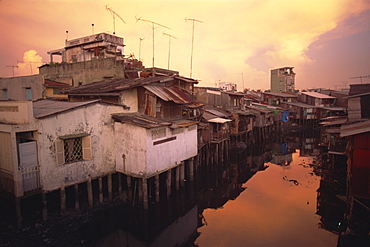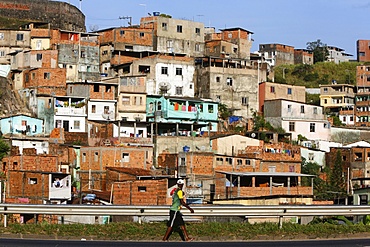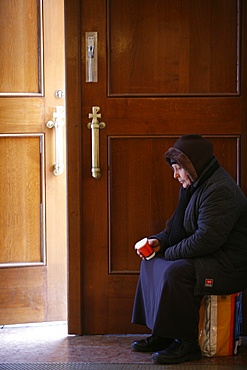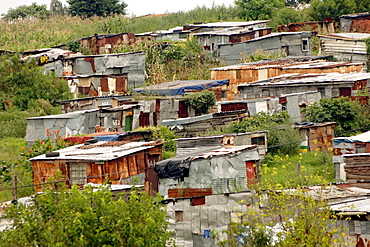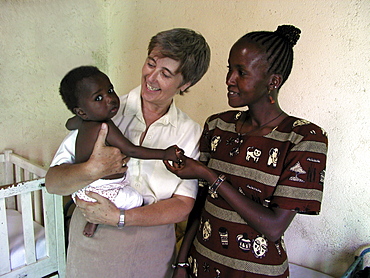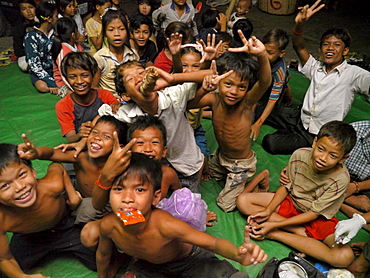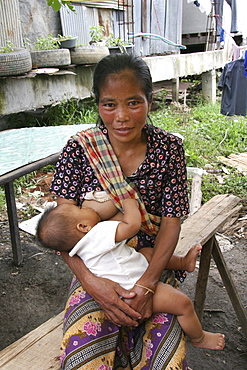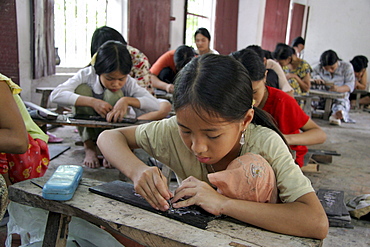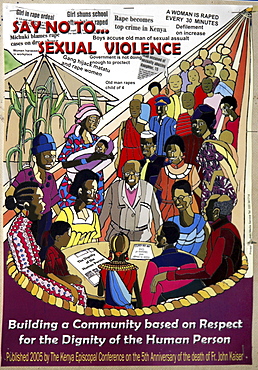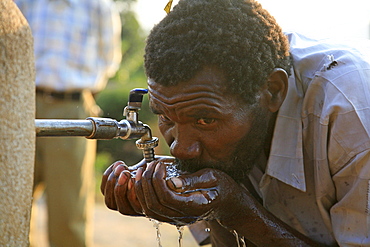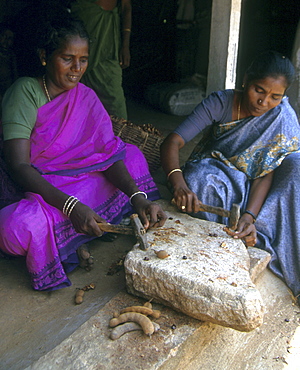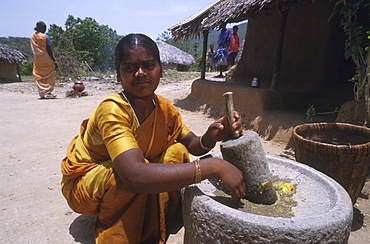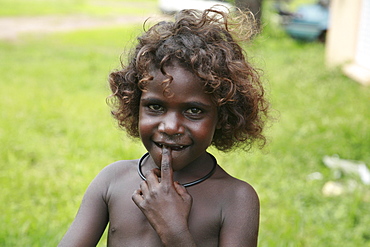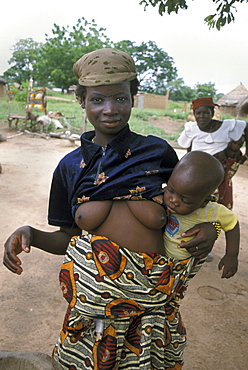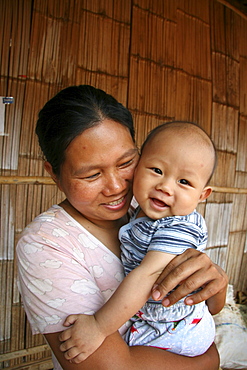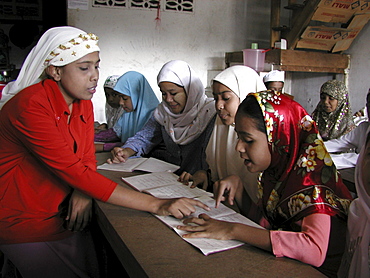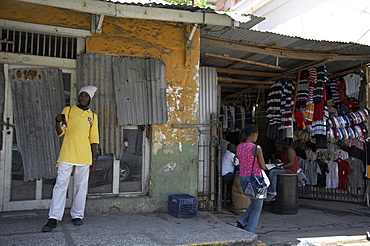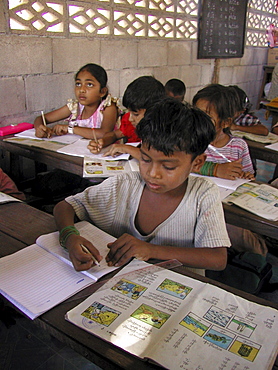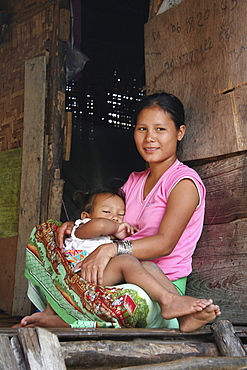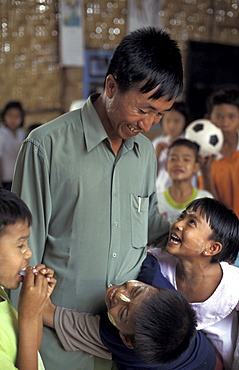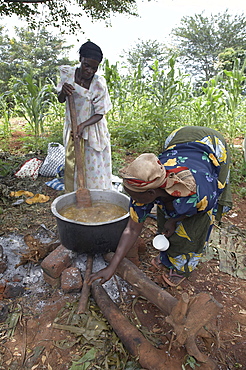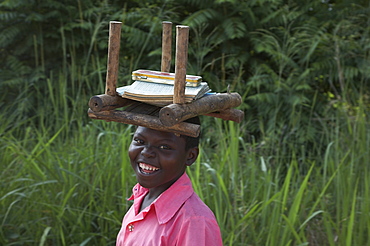Results
« Previous 1 2 3
210 results found
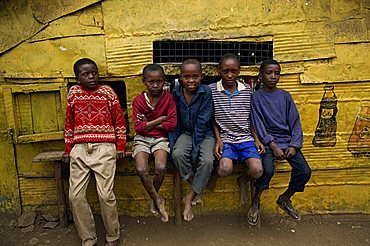
Portrait of a group of five boys, slum children, sitting on a bench outdoors, looking at the camera, Kariobangi, Nairobi, Kenya, East Africa, Africa
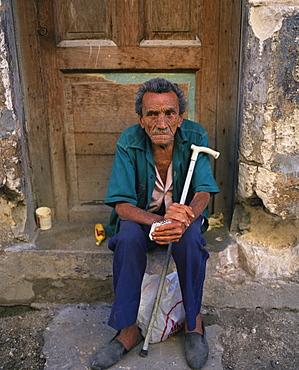
Portrait of an elderly man with a stick sitting on a doorstep selling cigarettes in Old Havana, Cuba, West Indies, Central America
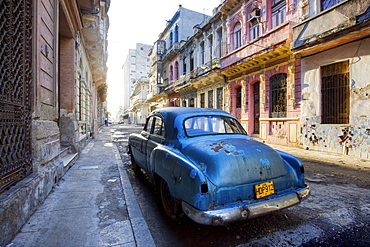
Dilapidated American car parked on a street of ornate colonial buildings, Havana Centro, Havana, Cuba, West Indies, Central America
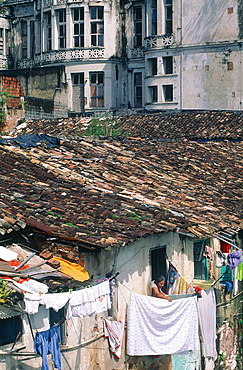
Brazil, Salvador De Bahia, The Historic Quarter Of Pelourinho, Laundry Hanging At Windows Of Slum Houses
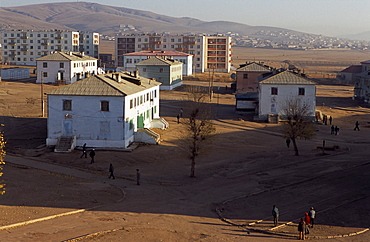
Mongolia. In late early sarangol a flourishing town lived in by some 5,000 soviet-mongol miners. mine been shut down leaving behind ninjas named green pans they wear on their back that make them resemble cartoon ninja turtles. ninjas, income earned from specks of gold clawed from river is a social safety in vast central asian country where more than on in three live below poverty line
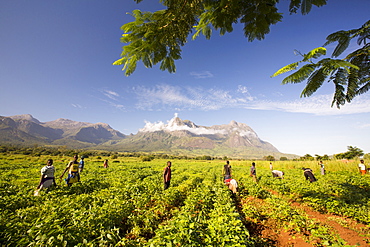
Malawian workers toil in a crop of soay below Mount Mulanje. In this poorest of African countries, many agricultural workers earn less than £1 a day.

In mid January 2015, a three day period of excessive rain brought unprecedented floods to the small poor African country of Malawi. It displaced nearly quarter of a million people, devastated 64,000 hectares of land, and killed several hundred people. This shot shows A Russian Mi8 helicopter being used by the United Nations, World Food Program to deliver food aid to areas still cut off by the flooding around Makhanga and Bangula.

In mid January 2015, a three day period of excessive rain brought unprecedneted floods to the small poor African country of Malawi. It displaced nearly quarter of a million people, devastated 64,000 hectares of alnd, and killed several hundred people. This shot shows a mother and child in Chiteskesa refugee camp, near Mulanje.

In mid January 2015, a three day period of excessive rain brought unprecedented floods to the small poor African country of Malawi. It displaced nearly quarter of a million people, devastated 64,000 hectares of land, and killed several hundred people. This shot shows solar powered lamps in a refugee camp near Chikwawa.
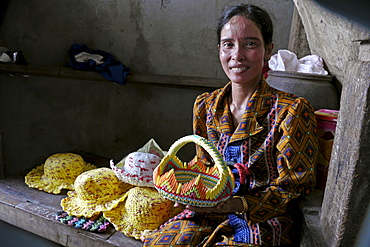
CAMBODIA Khoun Sokhoun, 44, former garbage scavenger, now maker of hats from recycled plastic bags and other items from recycled paper, benefciary of project run by local NGO CSARO which works with waste collectors in Phnom Penh. Here she is showing a basket made from recycled paper
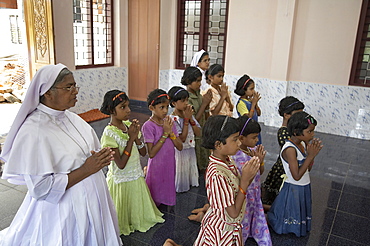
India. Nuns and girls at prayer. Mary matha bala bhavan, a girls orphanage run by syro-malabar catholic missionary sisters of mary immaculate (msmi), chamal village, thamarassery diocese, khozikode, kerala. 2007
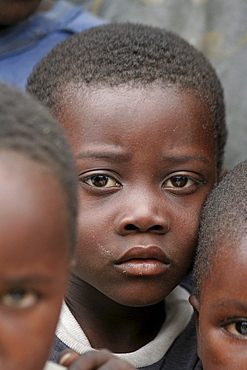
Namibia a feeding centre hungry children in rundu. Most of these children aids orphans, or positive themselves, or both. A catholic church organization provides them with a daily meal, perhaps only decent food they. hunger is evident in their eyes expressions

Kenya,dadaab refugees camp, somalian border gtz hospital ,the camps were set up around the town of dadaab beginning in 1991 when civil wars erupted on a grand scale in somalia (16 rival factions were involved). The wars, along with a prolonged drought, forced more than 900,000 somalis to flee to neighboring countries. Approximately 400,000 of them, many of whom were in a serious state of exhaustion and starvation, took refuge in kenya. Since then, a majority have returned to their country. However, some 131,000 somalis remain in kenya, and 110,000 are in dadaab, along with some sudanese, ugandans, and about 3,000 ethiopians women waiting the receive care from gtz ngo at the local hospital
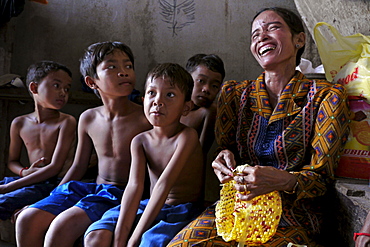
CAMBODIA Khoun Sokhoun, 44, former garbage scavenger, now maker of hats from recycled plastic bags and other items from recycled paper, benefciary of project run by local NGO CSARO which works with waste collectors in Phnom Penh. Seen here with her sons and orphaned nephews
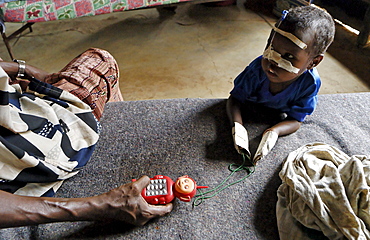
Kenya,dadaab refugees camp, somalian border gtz hospital ,the camps were set up around the town of dadaab beginning in 1991 when civil wars erupted on a grand scale in somalia (16 rival factions were involved). The wars, along with a prolonged drought, forced more than 900,000 somalis to flee to neighboring countries. Approximately 400,000 of them, many of whom were in a serious state of exhaustion and starvation, took refuge in kenya. Since then, a majority have returned to their country. However, some 131,000 somalis remain in kenya, and 110,000 are in dadaab, along with some sudanese, ugandans, and about 3,000 ethiopians women waiting the receive care from gtz ngo at the local hospital
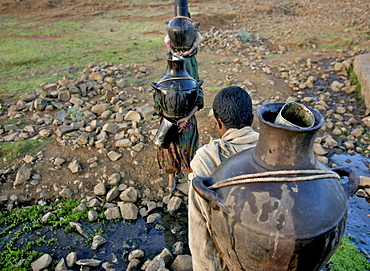
Women fetching water early in the morning. The wells in this area are empty during the dry season,forcing women to walk very long distance to fetch water in the nearest river bed. Ethiopia
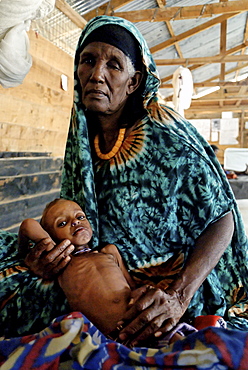
Kenya,dadaab refugees camp, somalian border gtz hospital ,the camps were set up around the town of dadaab beginning in 1991 when civil wars erupted on a grand scale in somalia (16 rival factions were involved). The wars, along with a prolonged drought, forced more than 900,000 somalis to flee to neighboring countries. Approximately 400,000 of them, many of whom were in a serious state of exhaustion and starvation, took refuge in kenya. Since then, a majority have returned to their country. However, some 131,000 somalis remain in kenya, and 110,000 are in dadaab, along with some sudanese, ugandans, and about 3,000 ethiopians women waiting the receive care from gtz ngo at the local hospital
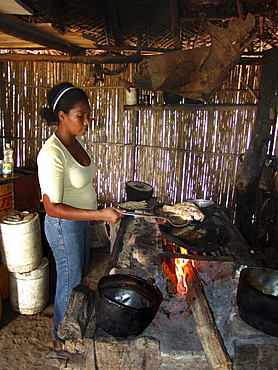
Colombia jasmine abufe grilling fish on a woodstove in her house beside the rio magdalena, barrancabermeja
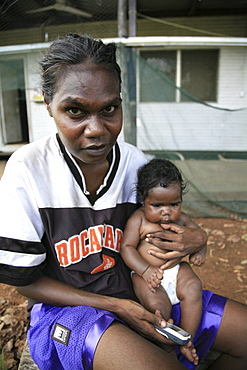
Australia mother and child living in aborigine community of , or beswick, arnemland, northern territory

Kenya,dadaab refugees camp, somalian border gtz hospital ,the camps were set up around the town of dadaab beginning in 1991 when civil wars erupted on a grand scale in somalia (16 rival factions were involved). The wars, along with a prolonged drought, forced more than 900,000 somalis to flee to neighboring countries. Approximately 400,000 of them, many of whom were in a serious state of exhaustion and starvation, took refuge in kenya. Since then, a majority have returned to their country. However, some 131,000 somalis remain in kenya, and 110,000 are in dadaab, along with some sudanese, ugandans, and about 3,000 ethiopians women waiting the receive care from gtz ngo at the local hospital
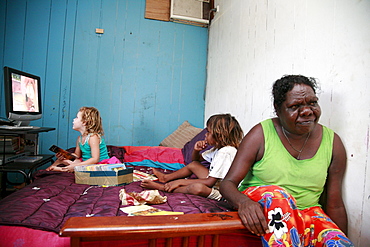
Australia. Children watching tv in aborigine community of , or beswick, arnemland, northern territory. 2007
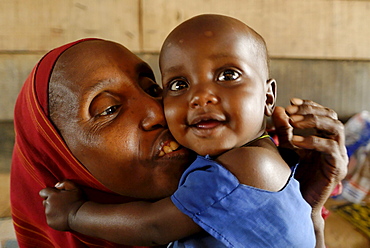
Kenya,dadaab refugees camp, somalian border gtz hospital ,the camps were set up around the town of dadaab beginning in 1991 when civil wars erupted on a grand scale in somalia (16 rival factions were involved). The wars, along with a prolonged drought, forced more than 900,000 somalis to flee to neighboring countries. Approximately 400,000 of them, many of whom were in a serious state of exhaustion and starvation, took refuge in kenya. Since then, a majority have returned to their country. However, some 131,000 somalis remain in kenya, and 110,000 are in dadaab, along with some sudanese, ugandans, and about 3,000 ethiopians women waiting the receive care from gtz ngo at the local hospital

In mid January 2015, a three day period of excessive rain brought unprecedneted floods to the small poor African country of Malawi. It displaced nearly quarter of a million people, devastated 64,000 hectares of alnd, and killed several hundred people. This shot shows a food being ferried across a river near Phalombe after the bridge was washed away.

Boy recycling wood after a cremation at the Pashupatinath Temple, a Hindu temple of Lord Shiva on the banks of the Bagmati River, UNESCO World Heritage Site, Kathmandu, Nepal, Asia
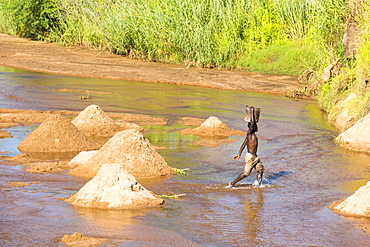
Workers extracting river sands and gravels from a river near Mangochi, Malawi, for use in house building.
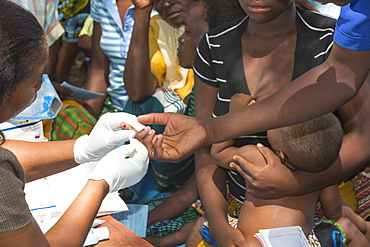
In mid January 2015, a three day period of excessive rain brought unprecedented floods to the small poor African country of Malawi. It displaced nearly quarter of a million people, devastated 64,000 hectares of land, and killed several hundred people. This shot shows A Medicin Sans Frontieres clinic in Makhanga testing local people for malaria, many of whom proved positive for the disease, as a result of the drying up flood waters providing ideal breeding grounds for mosquitoes.

January 2015 saw a three day period of excessive rain which brought unprecedented floods to the small poor African country of Malawi. It displaced nearly quarter of a million people, devastated 64,000 hectares of land, and killed several hundred people. This shot shows A Medicin Sans Frontieres clinic in Makhanga providing Malaria treatment drugs to local people, many of whom now have malaria, as a result of the drying up flood waters providing ideal breeding grounds for mosquitoes.

Malawi is one of the poorest countries in the world, it has been heavily deforested. The deforestation has been to clear land for an expanding population to have access to land to grow subsistence crops and also to make charcoal, which is the main cooking fuel in Malawi. This shot shows men working barefoot and moving massive tree trunks by hand in a logging camp on the Zomba Plateau.
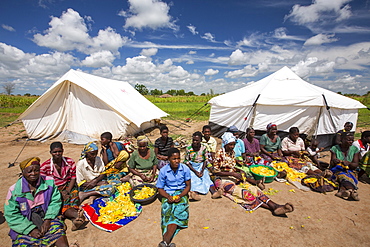
In mid January 2015, a three day period of excessive rain brought unprecedented floods to the small poor African country of Malawi. It displaced nearly quarter of a million people, devastated 64,000 hectares of land, and killed several hundred people. This shot shows displaced people in Baani refugee camp near Phalombe, preparing pumpkin flowers to eat.
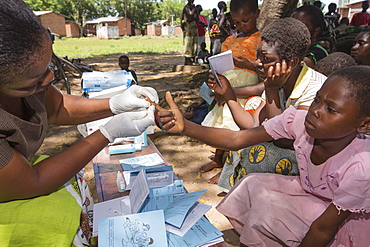
January 2015 saw a three day period of excessive rain which brought unprecedented floods to the small poor African country of Malawi. It displaced nearly quarter of a million people, devastated 64,000 hectares of land, and killed several hundred people. This shot shows A Medicin Sans Frontieres clinic in Makhanga testing local people, many of whom now have malaria, as a result of the drying up flood waters providing ideal breeding grounds for mosquitoes.

In mid January 2015, a three day period of excessive rain brought unprecedented floods to the small poor African country of Malawi. It displaced nearly quarter of a million people, devastated 64,000 hectares of land, and killed several hundred people. This shot shows A Russian Mi8 helicopter being used by the United Nations, World Food Program to deliver food aid to areas still cut off by the flooding, around Bangula and Mkhanga.
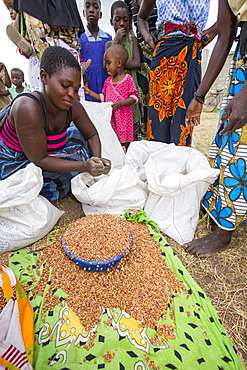
In mid January 2015, a three day period of excessive rain brought unprecedneted floods to the small poor African country of Malawi. It displaced nearly quarter of a million people, devastated 64,000 hectares of land, and killed several hundred people. This shot shows displaced people dividing up food aid in a refugee camp near Phalombe.
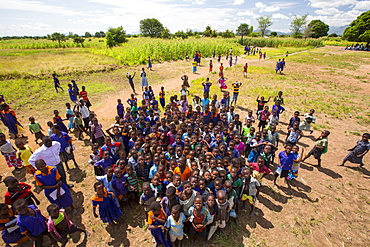
In mid January 2015, a three day period of excessive rain brought unprecedented floods to the small poor African country of Malawi. It displaced nearly quarter of a million people, devastated 64,000 hectares of land, and killed several hundred people. This shot shows displaced children in Baani refugee camp near Phalombe.
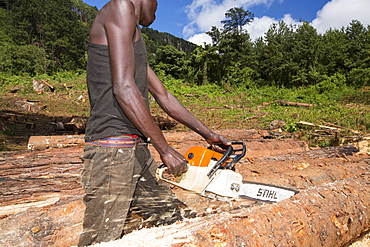
Malawi is one of the poorest countries in the world, it has been heavily deforested. The deforestation has been to clear land for an expanding population to have access to land to grow subsistence crops and also to make charcoal, which is the main cooking fuel in Malawi. This shot shows a logging camp on the Zomba Plateau.
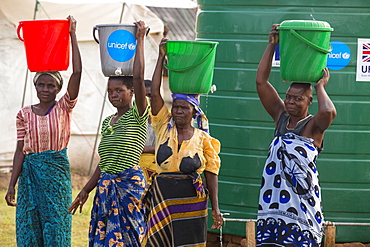
In mid January 2015, a three day period of excessive rain brought unprecedneted floods to the small poor African country of Malawi. It displaced nearly quarter of a million people, devastated 64,000 hectares of alnd, and killed several hundred people. This shot shows a displaced women carrying water in the refugee camp of Chiteskesa refugee camp, near Mulanje.
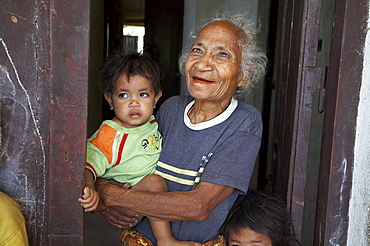
East timor. Camp for internally displaced people (idps) in the old hospital at baucau. Jacinta marques, and old woman and children at the camp
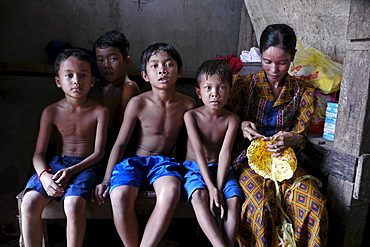
CAMBODIA Khoun Sokhoun, 44, former garbage scavenger, now maker of hats from recycled plastic bags and other items from recycled paper, benefciary of project run by local NGO CSARO which works with waste collectors in Phnom Penh. Seen here with her sons and orphaned nephews
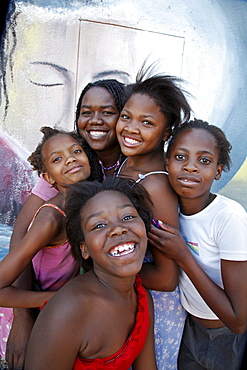
Namibia children, many of whom aids orphans positive themselves at bernard nordkamp (youth) center, katatura, a black township of windhoek, (dating from apartheid)
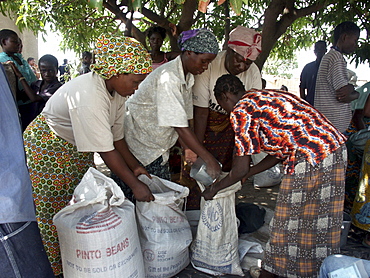
Zambia distribution of american catholic relief services (crs) food aid at a center in mongu, during a time of drought and famine. (2002-3)
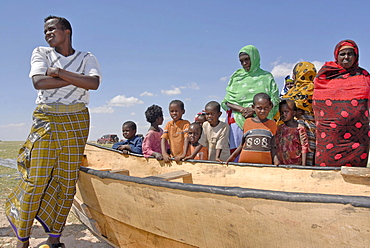
Hardest hit was a 650 kilometers stretch of the somali coastline between garacad (mudung region) and xaafuun (bari region), which forms part of the puntland province near the horn of africa. The tsunami resulted in the death of some 300 people and extensive destruction of shelters, houses and water sources as well as fishing gear. The livelihoods of many people residing in towns and small villages along the somali indian ocean coastline, particularly in the northern regions, were devastated

Hardest hit was a 650 kilometers stretch of the somali coastline between garacad (mudung region) and xaafuun (bari region), which forms part of the puntland province near the horn of africa. The tsunami resulted in the death of some 300 people and extensive destruction of shelters, houses and water sources as well as fishing gear. The livelihoods of many people residing in towns and small villages along the somali indian ocean coastline, particularly in the northern regions, were devastated
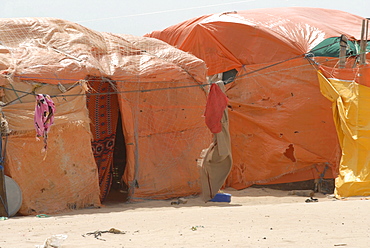
Hardest hit was a 650 kilometers stretch of the somali coastline between garacad (mudung region) and xaafuun (bari region), which forms part of the puntland province near the horn of africa. The tsunami resulted in the death of some 300 people and extensive destruction of shelters, houses and water sources as well as fishing gear. The livelihoods of many people residing in towns and small villages along the somali indian ocean coastline, particularly in the northern regions, were devastated

Hardest hit was a 650 kilometers stretch of the somali coastline between garacad (mudung region) and xaafuun (bari region), which forms part of the puntland province near the horn of africa. The tsunami resulted in the death of some 300 people and extensive destruction of shelters, houses and water sources as well as fishing gear. The livelihoods of many people residing in towns and small villages along the somali indian ocean coastline, particularly in the northern regions, were devastated

Hardest hit was a 650 kilometers stretch of the somali coastline between garacad (mudung region) and xaafuun (bari region), which forms part of the puntland province near the horn of africa. The tsunami resulted in the death of some 300 people and extensive destruction of shelters, houses and water sources as well as fishing gear. The livelihoods of many people residing in towns and small villages along the somali indian ocean coastline, particularly in the northern regions, were devastated

CAMBODIA Khoun Sokhoun, 44, former garbage scavenger, now maker of hats from recycled plastic bags and other items from recycled paper, benefciary of project run by local NGO CSARO which works with waste collectors in Phnom Penh. Seen here with her sons and orphaned nephews
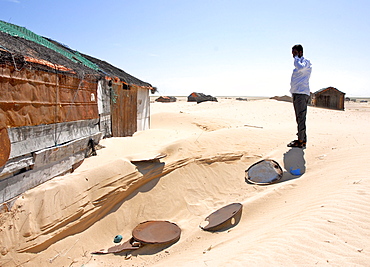
Hardest hit was a 650 kilometers stretch of the somali coastline between garacad (mudung region) and xaafuun (bari region), which forms part of the puntland province near the horn of africa. The tsunami resulted in the death of some 300 people and extensive destruction of shelters, houses and water sources as well as fishing gear. The livelihoods of many people residing in towns and small villages along the somali indian ocean coastline, particularly in the northern regions, were devastated

India. Sister bincy joseph aruviyil serving, during mealtime at the mary matha bala bhavan, a girls orphanage run by syro-malabar catholic missionary sisters of mary immaculate (msmi), chamal village, thamarassery diocese, khozikode, kerala. 2007

Namibia children, many of whom aids orphans positive themselves at bernard nordkamp (youth) center, katatura, a black township of windhoek, (dating from apartheid)
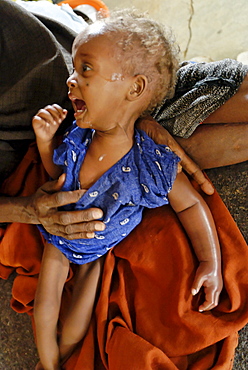
Kenya,dadaab refugees camp, somalian border gtz hospital ,the camps were set up around the town of dadaab beginning in 1991 when civil wars erupted on a grand scale in somalia (16 rival factions were involved). The wars, along with a prolonged drought, forced more than 900,000 somalis to flee to neighboring countries. Approximately 400,000 of them, many of whom were in a serious state of exhaustion and starvation, took refuge in kenya. Since then, a majority have returned to their country. However, some 131,000 somalis remain in kenya, and 110,000 are in dadaab, along with some sudanese, ugandans, and about 3,000 ethiopians women waiting the receive care from gtz ngo at the local hospital

CAMBODIA Women trained by CSARO to make handicrafts from recycled materials. Some are former waste pickers whose lives have been improved by the project. Kim Savoeun, 49, is the mother of 2 of the girls working here. The settlement slum of San Sok, 10 kilometres outsdie Phnom Penh
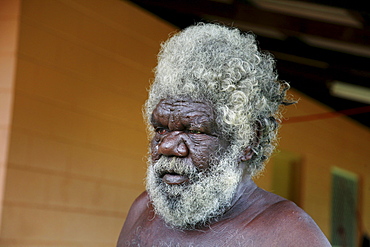
Australia. Older aborigine man, aborigine community of , or beswick, arnemland, northern territory. 2007
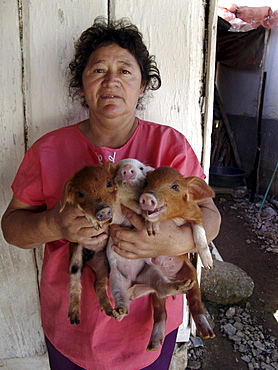
Honduras woman with piglets. These were provided by a project to raise nutrition levels in the rural areas. Marcala

